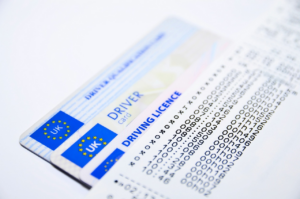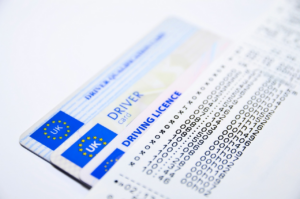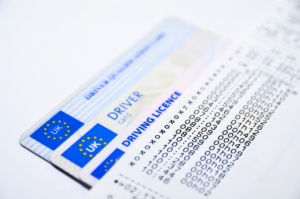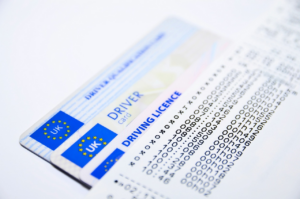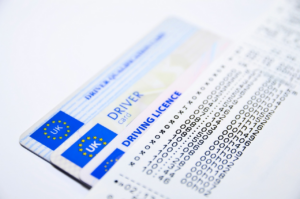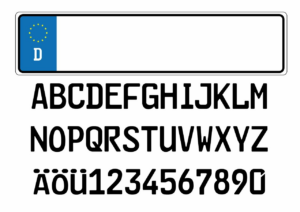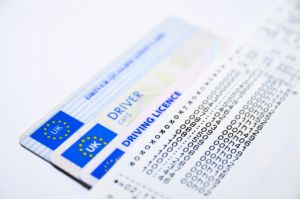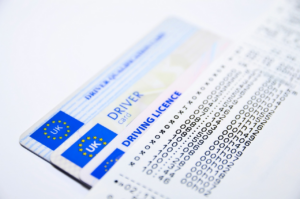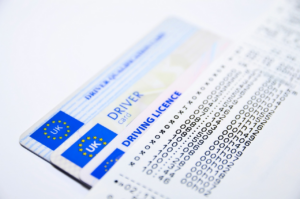Are you planning to get your Singapore driving license? If so, you need to be prepared for the driving license exam, which is mandatory for all drivers in Singapore. The exam is designed to test your knowledge of traffic rules and regulations, as well as your driving skills.
The difficulty level of the exam varies depending on the type of vehicle you wish to drive. In this article, we will provide you with an overview of the Singapore driving license exam for different vehicle types and what you can expect during the test.
The Singapore driving license exam consists of both theory and practical tests. The theory test is conducted in a computerized format and covers topics such as traffic rules and regulations, road signs, and defensive driving techniques. The practical test, on the other hand, is conducted on the road and assesses your driving skills.
The difficulty level of the exam varies depending on the class of license you wish to obtain. Class 3 and Class 3A licenses are required to drive cars, while Class 2B license is required to ride motorcycles.
In the following sections, we will provide you with an in-depth understanding of what to expect in the Singapore driving license exam for different vehicle types.
Overview of the Singapore Driving License Exam
You’ll get an idea of what the test entails with this overview, so you can prepare yourself for the challenge ahead.
The Singapore Driving License Exam is a practical test that evaluates your driving skills and knowledge on the road. It consists of two parts: the Basic Theory Test (BTT) and the Final Theory Test (FTT) for theoretical knowledge, and the Practical Driving Test (PDT) for practical skills.
The BTT and FTT are computer-based tests that assess your understanding of traffic rules, road signs, and safe driving practices. The BTT covers general driving knowledge, while the FTT focuses on driving in specific conditions, such as driving in bad weather, on expressways, and in residential areas.
The PDT is a practical test that evaluates your driving skills on the road, including your ability to follow traffic rules, control the vehicle, and make safe decisions while driving. The examiners will assess your driving skills in various traffic situations, such as making turns, changing lanes, and parking.
Class 3 License Exam
Passing the Class 3 exam requires a solid understanding of traffic rules and regulations, as well as the ability to operate a manual transmission vehicle. The exam is divided into two parts: the driving circuit and the road test.
Here are four things you can expect when taking the Class 3 License Exam in Singapore:
-
The driving circuit portion of the test will take place in a controlled environment, where you’ll be tested on your driving skills, such as parallel parking, three-point turn, and emergency braking.
-
The road test portion of the exam will take place on public roads, where you’ll be tested on your ability to navigate through traffic, follow traffic rules and regulations, and make safe and responsible driving decisions.
-
You’ll be required to demonstrate your ability to operate a manual transmission vehicle, which means you must be able to shift gears smoothly and efficiently.
-
The exam will also test your ability to perform basic vehicle maintenance tasks, such as checking tire pressure, changing a tire, and checking the oil level. It’s important to study these tasks thoroughly before taking the exam.
Overall, passing the Class 3 License Exam in Singapore requires a combination of knowledge, skill, and practice. Make sure to study the traffic rules and regulations, practice your driving skills, and familiarize yourself with the manual transmission vehicle before taking the exam. With dedication and hard work, you can pass the exam and obtain your Class 3 driving license.
Class 3A License Exam
When taking the Class 3A License Exam, you’ll want to be prepared for handling automatic cars, basic vehicle maintenance, and safe driving practices.
It’s important to know how to properly operate an automatic vehicle, as well as how to perform basic maintenance tasks like checking the oil and tire pressure.
Additionally, understanding safe driving practices like defensive driving and obeying traffic laws will be crucial for passing the exam and becoming a safe and confident driver.
Handling Automatic Cars
Mastering the operation of automatic cars is crucial for achieving success in the driving test. While driving automatic cars may seem easier than manual cars, it still requires skill and practice.
Here are some key points to keep in mind when handling automatic cars during the driving test:
-
Always keep your foot on the brake pedal when shifting gears. Unlike manual cars, automatic cars don’t have a clutch pedal. Therefore, you should use the brake pedal to keep the car stationary before moving it forward or backward.
-
Use the gear selector to shift gears. Automatic cars have a gear selector instead of a gear stick. The gear selector is usually located on the center console or on the steering wheel. You should only shift gears when the car is stationary or moving slowly.
-
Pay attention to the RPM gauge. The RPM gauge shows how fast the engine is running. It’s important to keep the RPMs in the ideal range to prevent the engine from stalling or overheating.
-
Know when to use the parking brake. The parking brake is used to keep the car stationary when it’s parked. You should use the parking brake when parking on a slope or on a flat surface.
By mastering these key points, you’ll be able to handle automatic cars with ease during the driving test. Remember to practice regularly and stay focused during the test to increase your chances of passing.
Basic Vehicle Maintenance
You’ll need to take care of your car if you want it to run smoothly, so let’s dive into some basic vehicle maintenance tips. First and foremost, regular oil changes are essential to keeping your engine running smoothly. Most cars need an oil change every 5,000 to 7,500 miles, but it’s always best to consult your owner’s manual for specific recommendations. Neglecting to change your oil can cause serious damage to your engine and even render your car inoperable.
Another important aspect of basic vehicle maintenance is checking your tire pressure regularly. Properly inflated tires not only improve fuel efficiency, but also decrease the risk of blowouts and other tire-related accidents. Use a tire pressure gauge to check your tires at least once a month, and make sure they’re inflated to the recommended PSI (pounds per square inch) for your vehicle. Keeping your tires properly inflated will not only keep you safe on the road, but also save you money in the long run by extending the life of your tires.
| Advantages of Basic Maintenance | Disadvantages of Neglecting Maintenance |
|---|---|
| Longer lifespan for your car | Damage to your engine |
| Better fuel efficiency | More frequent and expensive repairs |
| Decreased risk of accidents | Decreased resale value |
| Cost-effective | Inconvenience and frustration |
| Improved driving experience | Lower safety for you and your passengers |
Taking care of your car doesn’t have to be complicated or time-consuming. By following these basic maintenance tips and staying up-to-date on your vehicle’s needs, you can ensure a safer, smoother, and more enjoyable driving experience. Remember, the advantages of regular maintenance far outweigh the disadvantages of neglecting it.
Safe Driving Practices
Stay safe on the road and enjoy a stress-free driving experience by practicing safe driving habits. One of the most important practices you should always remember is to wear your seatbelt. Seatbelts significantly reduce the risk of injury or death in the event of an accident.
Make sure that you and your passengers buckle up before starting your journey. Another crucial safe driving practice is to always obey traffic rules and regulations. Always respect traffic lights, stop signs, and speed limits.
Keep a reasonable distance from the car in front of you, and avoid tailgating. Avoid driving under the influence of drugs or alcohol, and avoid using your phone while driving. Remember, safe driving is not just about avoiding accidents, but also about being responsible and considerate towards other road users.
Class 2B License Exam
As you progress to the Class 2B License Exam, you’ll find that the focus shifts to handling larger motorcycles with more power and weight, requiring greater skill and control.
The exam will test your ability to control the vehicle at slow speeds, perform U-turns, emergency stops, and obstacle avoidance maneuvers. You’ll also be assessed on your ability to ride safely on the road, including maintaining a safe distance from other vehicles, using appropriate signals, and making lane changes safely.
During the exam, you’ll need to demonstrate good balance and coordination, as well as a clear understanding of traffic rules and road safety. You’ll need to be confident and assertive while riding, but also cautious and aware of your surroundings.
Be sure to practice extensively before the exam, and take the time to review the rules and regulations for riding a motorcycle in Singapore. With the right preparation and mindset, you can pass the Class 2B License Exam and become a safe and skilled rider on the roads.
Traffic Rules and Regulations
As you prepare for your Class 2B license exam in Singapore, it’s important to familiarize yourself with traffic rules and regulations.
This includes understanding road signs and signals, right of way, and traffic flow.
Knowing these key points will not only help you pass the exam but also ensure your safety on the road.
So, take the time to study and practice these important concepts.
Road Signs and Signals
Knowing the meanings of road signs and signals is crucial in obtaining a driver’s license and operating a vehicle safely. In the Singapore driving license exam, you can expect to be tested on your knowledge of road signs and signals.
Road signs are used to provide information and guidance about the road ahead, while signals are used to control traffic and indicate when you should stop, go, or slow down. There are many different types of road signs and signals that you should be familiar with before taking the driving license exam.
Some of the most common road signs include speed limit signs, no entry signs, stop signs, and yield signs. In addition, you should also be familiar with traffic signals, such as red, yellow, and green lights, as well as pedestrian crossing signals.
By understanding the meanings of these signs and signals, you can be a safe and responsible driver on the road.
Right of Way
Get ready to learn about the rules of right of way, which are crucial for safe and responsible driving. Right of way refers to the legal right of a driver to proceed first in a certain situation, and it’s important to know who has the right of way in different scenarios to avoid accidents.
In general, the driver who arrives at an intersection first has the right of way, unless there’s a traffic signal or sign indicating otherwise.
Additionally, drivers who are turning left must yield to oncoming traffic, while drivers who are turning right can only proceed after checking for pedestrians and other vehicles.
It’s also important to yield to emergency vehicles, such as ambulances and fire trucks, when they’re approaching with their sirens on.
By following these rules of right of way, you can drive safely and avoid accidents.
Traffic Flow
Now that you’ve got a good understanding of right of way, let’s move on to the next subtopic: traffic flow. This is an important concept to understand as it affects how you drive and interact with other drivers on the road.
Traffic flow refers to the movement of vehicles on the road, including the speed, direction, and spacing between vehicles. Understanding traffic flow is essential for safe and efficient driving.
When driving, it’s important to maintain a safe distance from the vehicle in front of you. The distance should be enough to allow you to stop safely if the vehicle in front suddenly brakes. This is called the following distance.
You should also be aware of your surroundings and anticipate changes in traffic flow, such as merging vehicles, lane closures, and traffic congestion. By paying attention to traffic flow, you can adjust your driving accordingly, avoid accidents, and reach your destination safely.
Defensive Driving Techniques
When it comes to defensive driving techniques, there are three key points to keep in mind: hazard perception, risk management, and emergency response.
By being aware of potential hazards on the road, you can take steps to avoid them before they become a problem.
Effective risk management means making decisions that prioritize safety and minimize the likelihood of accidents.
And in emergency situations, it’s essential to know how to respond quickly and calmly to keep yourself and others safe.
Hazard Perception
The ability to identify potential hazards on the road is a critical aspect of the Singapore driving license exam. During the test, you’ll be asked to identify hazards that may cause accidents or require you to take evasive action.
These hazards can include other vehicles, pedestrians, road conditions, and weather conditions. To pass the hazard perception portion of the exam, you must be able to identify potential hazards early and take appropriate action to avoid them.
This requires a high level of situational awareness and the ability to anticipate potential dangers. You’ll need to demonstrate your ability to identify hazards in a variety of driving scenarios, including urban, suburban, and rural environments.
By practicing hazard perception techniques, you can improve your chances of passing the driving license exam and becoming a safe and responsible driver on Singapore’s roads.
Risk Management
Managing risks on the road is crucial for any driver, and this section will provide valuable insights on how to stay safe and avoid potential accidents. Risk management involves identifying potential hazards on the road and taking steps to prevent them.
One important aspect of risk management is defensive driving, which means being aware of your surroundings and anticipating potential dangers. This includes keeping a safe distance from other vehicles, scanning the road ahead for potential hazards, and being prepared to react quickly if necessary.
Another important aspect of risk management is following traffic rules and regulations. This includes obeying speed limits, using turn signals and headlights as required, and avoiding distracted driving.
It is also important to be aware of weather conditions and adjust your driving accordingly. For example, driving too fast on wet or icy roads can increase the risk of an accident.
By practicing good risk management techniques, you can minimize your chances of being involved in an accident and keep yourself and others safe on the road.
Emergency Response
You need to know how to respond quickly and effectively in an emergency situation on the road, and this section will provide you with the necessary knowledge and skills to do so.
During the driving license exam, you may encounter scenarios where you have to respond to unexpected situations like a car suddenly stopping in front of you or a pedestrian crossing the road. It’s important to remain calm and act quickly in these situations.
To respond effectively, you need to have a good understanding of the basic emergency response techniques. For example, if a car suddenly stops in front of you, you need to quickly assess the situation, brake firmly, and swerve to avoid a collision. Similarly, if a pedestrian crosses the road in front of you, you need to slow down and give them enough space to cross safely.
During the driving license exam, you’ll be evaluated on your ability to respond to emergency situations in a safe and effective manner. Therefore, it’s important to practice these techniques regularly to develop your skills and confidence on the road.
Practical Driving Test
When taking the Practical Driving Test, it’s important to know what to expect. The test route will take you through a variety of different driving scenarios, so be prepared for anything.
The test itself usually lasts around 30 minutes, giving you plenty of time to demonstrate your skills behind the wheel.
Test Route
As you progress through the test route, be aware of the various road conditions and traffic patterns to ensure a safe and successful driving experience.
The Singapore driving license exam for different vehicle types has different test routes. For example, the test route for a motorcycle license will involve narrow lanes and tight turns, while the test route for a Class 3 or Class 3A license will involve more complex road networks and intersections.
To better prepare yourself for the test route, familiarize yourself with the different road conditions and traffic patterns that you may encounter. This can be done by practicing on similar roads and studying the local traffic laws.
Additionally, be sure to pay attention to road signs and markings, and always follow the speed limit. By doing so, you’ll increase your chances of success on the driving license exam and ensure a safe driving experience on the roads of Singapore.
3 Tips for Success on the Test Route
-
Keep a safe following distance from other vehicles. This’ll give you more time to react to any sudden stops or changes in traffic patterns.
-
Always check your blind spots before making turns or changing lanes. This’ll ensure that you don’t accidentally collide with another vehicle or pedestrian.
-
Practice your parking skills, as this is an important part of the driving license exam. Be sure to practice both parallel and perpendicular parking, and always use your turn signals when parking.
Test Scenarios
Now that you know the test route, it’s time to prepare for the different test scenarios you may encounter during your Singapore driving license exam. The test scenarios will vary depending on the type of vehicle you’re taking the exam for, whether it’s a car, motorcycle, or heavy vehicle.
For car drivers, you can expect to be tested on your ability to perform basic maneuvers such as parallel parking, three-point turns, and lane changes. You’ll also be tested on your ability to navigate through different road conditions such as roundabouts, traffic lights, and pedestrian crossings.
Motorcycle drivers, on the other hand, will be tested on their ability to control the motorcycle, perform basic maneuvers such as figure-eight turns, and navigate through different road conditions such as narrow lanes and uneven surfaces.
Heavy vehicle drivers will be tested on their ability to handle the size and weight of the vehicle, perform basic maneuvers such as reversing and turning, and navigate through different road conditions such as steep slopes and narrow roads.
It’s important to familiarize yourself with the specific test scenarios for your vehicle type and practice them as much as possible before the exam. Remember to stay calm and focused during the exam, and always follow traffic rules and regulations. With enough preparation and practice, you can pass the Singapore driving license exam and become a safe and responsible driver on the road.
Test Duration
The duration of the test varies depending on the type of vehicle, and it’s important to be aware of the time constraints to properly prepare.
For the Class 3/3A driving test, which is for cars and light goods vehicles, the test will take approximately 30 minutes. This includes a 10-minute warm-up session where the examiner will check your vehicle and ensure that you’re familiar with its functions.
The remaining 20 minutes will be spent on the road, where the examiner will assess your driving skills and ability to follow traffic rules.
On the other hand, the Class 2B driving test, which is for motorcycles with an engine capacity of 200cc or less, will also take approximately 30 minutes.
Similar to the Class 3/3A test, there will be a warm-up session where the examiner will check your motorcycle and ensure that you’re familiar with its functions.
The remaining 20 minutes will be spent on the road, where the examiner will assess your riding skills and ability to follow traffic rules.
It’s important to keep in mind that during the test, the examiner will be looking for specific skills and behaviors, so it’s crucial to be well-prepared and confident to pass the test.
Tips for Passing the Exam
You’ll find some helpful tips here to help you pass the test with flying colors and earn your license.
Firstly, make sure you familiarize yourself with the road rules and regulations in Singapore. This includes speed limits, traffic signals, road signs, and proper use of lanes. You should also know the hand signals and basic vehicle maintenance. Knowing these things will help you avoid unnecessary mistakes during the test.
Secondly, practice as much as you can. Get behind the wheel and practice your driving skills. Focus on your weaknesses and improve them. You should also practice the different maneuvers required during the test such as parallel parking, three-point turn, and emergency stop. Practicing in different weather and traffic conditions will also help you prepare for any situation that may arise during the test.
Finally, don’t forget to stay calm and confident during the test. Remember that you have prepared for this moment and you’re capable of passing the test. Good luck!
Frequently Asked Questions
What is the minimum age requirement to apply for a driving license in Singapore?
If you’re looking to apply for a driving license in Singapore, you must first meet the minimum age requirement.
For Class 3 and Class 3A licenses, which allow you to drive cars, motorized tricycles, and light goods vehicles, you must be at least 18 years old.
For Class 2B and Class 2A licenses, which allow you to ride motorcycles, you must be at least 18 and 19 years old respectively.
Finally, for the Class 2 license, which allows you to ride motorcycles with no engine capacity limit, you must be at least 21 years old.
Keep in mind that you must also pass a series of tests, including a theory test and a practical driving test, before you can obtain your license.
How many attempts are allowed to pass the practical driving test in Singapore?
When it comes to passing the practical driving test in Singapore, you’re allowed a maximum of three attempts to succeed. If you fail all three attempts, you’re required to retake and pass the Basic Theory Test (BTT) before being eligible to take the practical test again.
It’s essential to ensure that you’re well-prepared for the test, as it covers several aspects such as vehicle control, safety checks, and road etiquette. You must also have a good understanding of the traffic rules and regulations in Singapore.
Practice makes perfect, so it’s advisable to take ample time to practice driving before taking the test.
Are there any specific medical requirements to obtain a driving license in Singapore?
To obtain a driving license in Singapore, there are specific medical requirements that you need to meet. You must have good eyesight, with or without correction, and your visual acuity must be at least 6/12 for both eyes.
You should not have any hearing impairment that would affect your ability to hear road signals and traffic sounds. Additionally, you must not have any medical conditions that could affect your ability to drive safely, such as epilepsy, heart problems, or severe psychiatric disorders.
If you have a medical condition, you’ll need to provide a medical report from a registered doctor that certifies you’re fit to drive. It’s important to note that the Land Transport Authority (LTA) may request additional medical examinations or assessments if necessary.
Can foreign driving licenses be converted to a Singapore driving license?
If you hold a valid foreign driving license, you may be able to convert it to a Singapore driving license without having to take the driving test. The conversion process will depend on the country where your foreign driving license was issued, and you’ll need to meet certain eligibility criteria.
Generally, you’ll need to pass a medical examination and prove that you have a certain level of driving experience. You’ll also need to submit various documents, such as your foreign driving license, passport, and proof of residency in Singapore.
Once you’ve completed the conversion process, you’ll be issued a Singapore driving license that’s valid for a certain period of time, depending on your age and driving experience.
Are there any penalties for breaking traffic rules during the driving license exam?
During the Singapore driving license exam, it’s crucial to follow all traffic rules and regulations to avoid any penalties.
Breaking traffic rules during the exam can result in an immediate disqualification, and you’ll have to retake the test at a later date.
Some common traffic violations that can lead to disqualification include failure to give way, running a red light, speeding, and improper lane changing.
It’s important to stay calm and focused during the test and always pay attention to your surroundings. Remember to prioritize safety and follow all traffic rules to increase your chances of passing the exam.
Conclusion
In conclusion, passing the Singapore driving license exam requires preparation, knowledge of traffic rules and regulations, and defensive driving techniques.
The exam is divided into three different classes for different vehicle types, each with its own set of requirements. The Class 3 license exam is for manual transmission cars, while the Class 3A license exam is for automatic transmission cars. The Class 2B license exam is for motorbikes with an engine capacity of up to 200cc.
During the exam, you’ll be tested on theoretical knowledge and practical driving skills. It’s important to study traffic rules and regulations thoroughly, as this will form a significant portion of the theoretical test.
In addition, mastering defensive driving techniques will help you anticipate and avoid potential hazards on the road.
Finally, the practical driving test requires you to demonstrate safe and competent driving skills, including basic vehicle handling, parking, and driving in different road conditions.
With adequate preparation and practice, passing the Singapore driving license exam is achievable.











